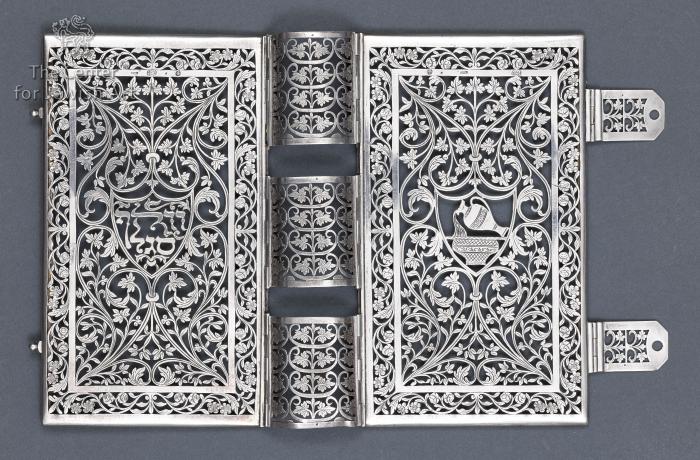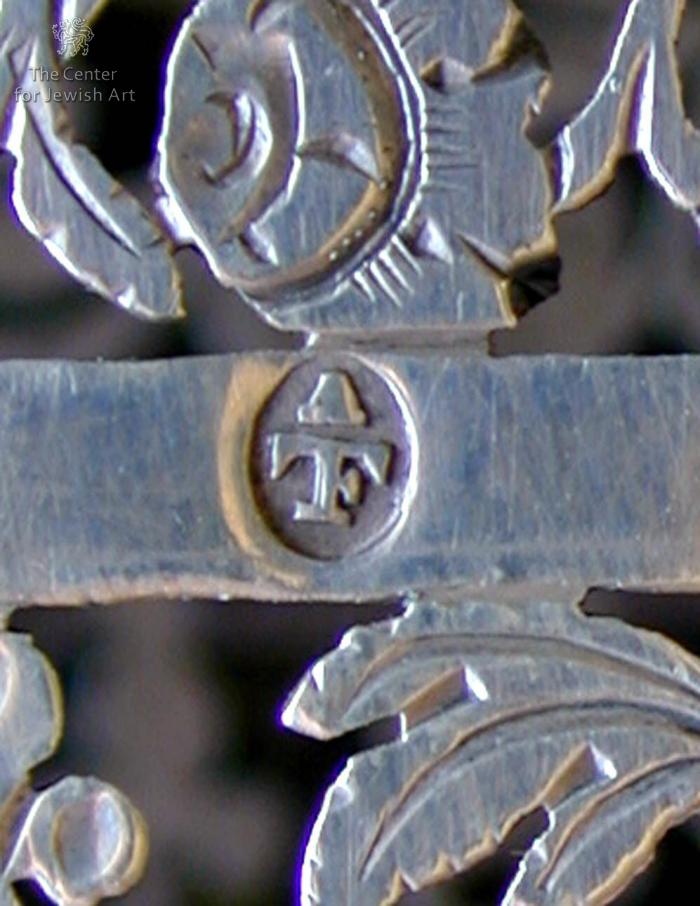Obj. ID: 36248 Book Binding, Baden bei Wien, 1821

sub-set tree:
The following description was prepared by William Gross:
The bindings of Jewish books are generally quite simple, but there does exist a tradition, probably among the wealthier section of the population, of binding books in special and elegant ways utilizing a variety of material.
Silver book bindings are one of the most elegant objects of Jewish ritual art. The form is generally copied from Catholic and Orthodox Christian tradition where prayer books were often covered with silver bindings in keeping with the other elegant silver pieces used in the prayer service. As in many other areas of life, Jews emulated some customs from what they saw of their Christian neighbors. Since such a binding was an expensive purchase for an individual, such silver pieces are fairly rare. Their appearance is most widespread in Italy, but examples also exist from Germany, Poland, Ukraine, Austria and even the Ottoman Empire.
There are a number of cutout work silver bindings recorded that were made for Jewish patrons. But this is arguably the earliest recorded silver Jewish bookbinding from Vienna as most of the other known examples are dated from the middle of the century or later. The cutout work of the design includes the name of the owner in Hebrew letters and the symbol of the Levites along with the name of the owner, Wolf Segal, amidst the scrolling floral designs. Inscription: Wolf Segal









